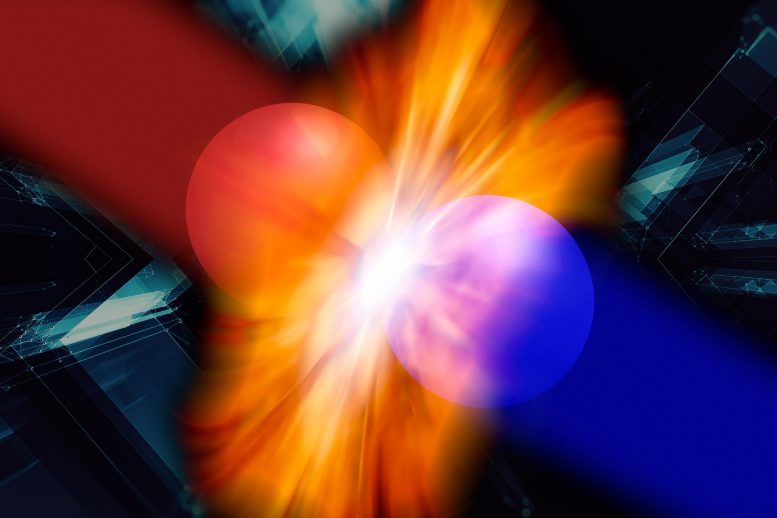
The LHCb collaboration at CERN has precisely measured two parameters linked to CP violation (matter-antimatter asymmetry) in beauty meson decays, using data from the Large Hadron Collider’s second run. These results, which fall in line with the Standard Model’s predictions, improve our understanding of differences between matter and antimatter, and could assist in identifying new physics phenomena.
The LHCb collaboration’s new measurements of matter–antimatter asymmetry in decays of beauty particles are the most precise yet of their kind.
The Big Bang is thought to have created equal amounts of matter and antimatter, yet the Universe today is made almost entirely of matter, so something must have happened to create this imbalance.
The weak force of the Standard Model of particle physics is known to induce a behavioral difference between matter and antimatter – known as CP symmetry violation – in decays of particles containing quarks, one of the building blocks of matter. But these differences, or asymmetries, are hard to measure and insufficient to explain the matter–antimatter imbalance in the present-day Universe, prompting physicists to both measure precisely the known differences and to look for new ones.
At a seminar held at CERN today, June 13, the LHCb collaboration reported how it has measured, more precisely than ever before, two key parameters that determine such matter–antimatter asymmetries.
In 1964, James Cronin and Val Fitch discovered CP symmetry violation through their pioneering experiment at Brookhaven National Laboratory in the US, using decays of particles containing strange quarks. This finding challenged the long-held belief in this symmetry of nature and earned Cronin and Fitch the Nobel Prize in Physics in 1980.
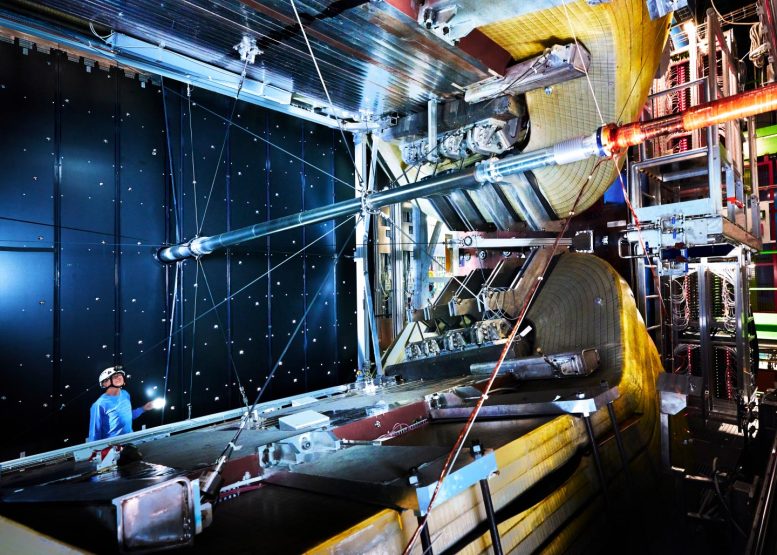
The LHCb experiment. Credit: CERN
In 2001, the BaBar experiment in the US and the Belle experiment in Japan confirmed the existence of CP violation in decays of beauty mesons, particles with a beauty quark, solidifying our understanding of the nature of this phenomenon. This achievement ignited intense research efforts to further understand the mechanisms behind CP violation. In 2008, Makoto Kobayashi and Toshihide Maskawa received the Nobel Prize in Physics for their theoretical framework that elegantly explained the observed CP violation phenomena.
It its latest studies, using the full dataset recorded by the LHCb detector during the second run of the Large Hadron Collider (LHC), the LHCb collaboration set out to measure with high precision two parameters that determine the amount of CP violation in decays of beauty mesons.
One parameter determines the amount of CP violation in decays of neutral beauty mesons, which are made up of a bottom antiquark and a down quark. This is the same parameter as that measured by the BaBar and Belle experiments in 2001. The other parameter determines the amount of CP violation in decays of strange beauty mesons, which consist of a bottom antiquark and a strange quark.
Specifically, these parameters determine the extent of time-dependent CP violation. This type of CP violation stems from the intriguing quantum interference that occurs when a particle and its antiparticle undergo decay. The particle has the ability to spontaneously transform into its antiparticle and vice versa. As this oscillation takes place, the decays of the particle and antiparticle interfere with each other, leading to a distinctive pattern of CP violation that changes over time. In other words, the amount of CP violation observed depends on the time the particle lives before decaying. This fascinating phenomenon provides physicists with key insights into the fundamental nature of particles and their symmetries.
For both parameters, the new LHCb results, which are more precise than any equivalent result from a single experiment, are in line with the values predicted by the Standard Model.
“These measurements are interpreted within our fundamental theory of particle physics, the Standard Model, improving the precision with which we can determine the difference between the behavior of matter and antimatter,” explains LHCb spokesperson Chris Parkes. “Through more precise measurements, large improvements have been made in our knowledge. These are key parameters that aid our search for unknown effects from beyond our current theory.”
Future data, from the third run of the LHC and the collider’s planned upgrade, the High-Luminosity LHC, will further tighten the precision on these matter–antimatter asymmetry parameters and perhaps point to new physics phenomena that could help shed light on what is one of the Universe’s best-kept secrets.


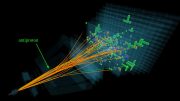
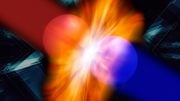

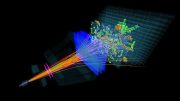

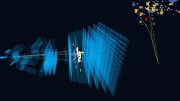
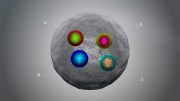
The origin of CP symmetry violation. A paper called “Question of Parity Conservation in Weak Interactions”. Which published by Physical Review Letters (PRL) in October 1956. It is pseudoscience. Here’s why.
1. If we don’t understand how θ & τ was formed, there will be no clear evidence to infer parity violation of them in weak interaction.
2. There is no clear evidence to suggest that two sets of cobalt-60 can be transformed into symmetry by rotating in opposite directions. Similarly, the motion of two hydrogen atoms – electrons around the nucleus – may not necessarily be symmetrical at the same time, even via reverse rotation.
Undoubtedly, the inference of parity violation in weak interaction is pseudoscience.
Topological vortex and its twin anti-vortex exhibit parity conservation (P), charge conjugation (C) and time reversal (T) symmetry. According to the topological vortex gravitational field theory, the physical real mirror image of nature can be exist between the topological vortex and its twin anti-vortex, not must be between the high-dimensional space-time matters formed by their interaction.
It is meaningless to discuss the CP of two particles (or things) that are not mirror images of each other. This type of discussion is full of deception and misleading. Its absurd aspect lies in:
1. Firstly, subjectively determine that two particles (or things) are mirror images of each other.
2. Subsequently, experimental detection revealed that the two particles (or things) are asymmetric.
The experiment showed that the previous subjective determination was incorrect. According to common sense, it should be concluded that the two particles (or things) are not mirror images of each other.
However, Physical Review Letters did not do so. Their conclusion is:
The two particles (or things) that are mirror images of each other are asymmetric.
This blatant sophistry and misleading behavior is undoubtedly a desecration to the scientific spirit and public wisdom.
The hypocrisy, dirtiness, and ugliness of the Physical Review Letters (PRL) are unparalleled in the history of science.
In my opinion of the building block of matter the decay rate of the antimatter would be the key to understanding how different quarks are ups or downs. The shorter the decay the stronger the force and the longer the decay the weeker. If a collection of decay rates of antimatter is possible you may find multiple difference in how matter is possible. Is the decay rate a constant or does rate of decay very in antimatter to determine the nature of the quark gluon, the scale of detection is so small and complex to observe we may never know. Does the symmetry exist before the nature of the quark gluon is determined then asymmetry.
On the topological vortex gravitational field theory, symmetry is mathematics, a natural creation, and asymmetry is a local manifestation of symmetric in interaction. If there is God’s creation of the world, then symmetry is God.
Smaller and smaller the greater the complexity new detections are becoming the norm, and as far as God it’s a belief in a purpose. If I were to compare God it would be Time never fleeting.
According to the topological vortex gravitational field theory, the essence of time is the rotation of topological vortex. Therefore, time is a circular arrow, although it has only one direction, any point on the ring can be the beginning and end. Each topological vortex field has its own spin period. As a result, time is both absolute and relative in the interaction of topological vortices.
Best wishes for you.